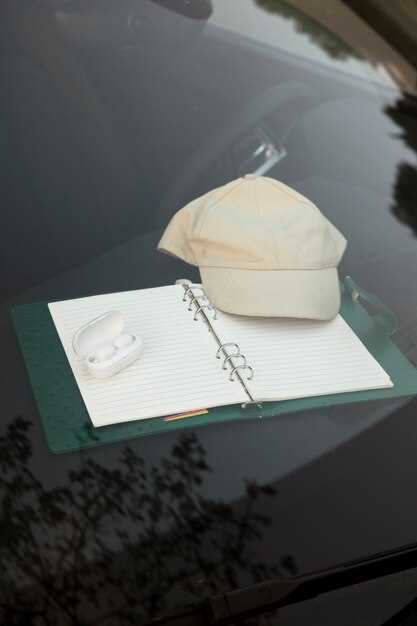
For classic car enthusiasts, understanding the various types of insurance available is essential to protecting their investment. The value of a classic car can significantly exceed that of a standard vehicle, necessitating specialized coverage options that cater specifically to classic and vintage automobiles. Standard auto insurance policies may not adequately cover the unique aspects of classic cars, such as their appreciation in value and the specialized care they require.
One key classification within classic car insurance involves assessing the vehicle’s value based on its age, rarity, and condition. Classic car insurance providers often use agreed-upon value policies, which allow owners and insurers to establish a fair value for the vehicle upfront. This ensures that in the event of a total loss, the owner receives a compensation that truly reflects the car’s worth, rather than a depreciated market value.
Furthermore, owners must also consider the different types of coverage needed based on their usage. For example, some may opt for limited mileage policies that cater to those who only drive their classic cars occasionally, while others might require more comprehensive coverage for vehicles that are frequently displayed at shows or driven to events. Understanding these classifications enables classic car owners to choose the most appropriate insurance that aligns with their specific needs and protects their treasured investments.
Understanding Declared Value for Your Classic Car

When insuring a classic car, one of the most critical concepts is the declared value. This is the amount that the owner and the insurance company agree upon as the car’s worth at the time the policy is established. The declared value plays a significant role in determining premiums and ensuring proper coverage in case of a loss or damage.
Unlike standard vehicles, classic cars often appreciate in value due to their rarity and desirability. Therefore, it’s essential to assess the declared value accurately. Owners should consider factors such as age, condition, modifications, and market demand when establishing this figure. Consulting classic car appraisal experts can provide a more accurate assessment and help justify the declared value to the insurer.
In the event of a total loss, the declared value is usually the maximum amount the insurance company will pay. If the car is undervalued, the owner may receive significantly less than expected, making it crucial to communicate any changes in the car’s condition or value to the insurer promptly.
Additionally, many insurance companies offer agreed value policies specifically designed for classic cars. This type of policy locks in the declared value at the outset, ensuring that in the event of a claim, the owner receives the exact agreed amount without depreciation deductions.
In summary, understanding and accurately determining the declared value of your classic car is vital for securing appropriate insurance coverage. Doing so can prevent potential financial loss and ensure that your prized possession is adequately protected.
Types of Insurance Coverage for Classic Vehicles

When insuring a classic vehicle, it is essential to consider the various types of insurance coverage available to protect your investment. Classic cars are unique in both value and condition, making specialized insurance necessary.
Agreed Value Coverage is a popular option for classic car owners. This type of policy allows car owners to declare the agreed value of their vehicle at the start of the policy. In the event of a total loss, the owner receives the pre-determined amount, ensuring that the true value of the classic car is recognized and compensated.
Actual Cash Value (ACV) Coverage differs from agreed value coverage in that it takes depreciation into account. With ACV coverage, the insured value may be lower than expected, as it reflects the current market value at the time of loss. This type of coverage may not be ideal for classic car enthusiasts looking to maintain their vehicle’s value.
Collector Car Insurance is specifically designed for classic and collector vehicles. These policies usually offer higher liability limits and fewer restrictions on usage compared to standard car insurance. They often require that the car is stored securely and used infrequently, allowing for a lower premium while still protecting the owner’s investment.
Comprehensive and Collision Coverage are also important components of classic car insurance. Comprehensive coverage protects against theft, vandalism, and natural disasters, while collision coverage covers damages resulting from accidents, regardless of fault. Together, these policies can shield classic vehicle owners from various risks that could devalue their prized possessions.
In summary, selecting the right type of insurance coverage for classic vehicles is crucial in safeguarding their value. Owners should assess their needs and the unique aspects of their cars to declare the appropriate amount of coverage to ensure optimal protection.
Factors Affecting Insurance Premiums for Classic Cars
Insurance premiums for classic cars are influenced by several key factors that determine the overall risk and value associated with these vehicles. Understanding these elements can help owners make informed decisions when selecting coverage.
Value of the Vehicle: The insured value of a classic car plays a significant role in determining premiums. Higher appraised values typically lead to increased premiums, as these vehicles represent a larger financial risk for insurers. Owners should have their cars professionally appraised and declared to ensure they receive an accurate assessment that reflects their car’s current market value.
Type of Classic Car: Different types of classic cars may have varying premiums due to factors such as make, model, and rarity. For instance, limited edition models or those with historical significance often command higher premiums due to their collectible nature. Additionally, the age of the vehicle can influence costs; older cars might qualify for specialized policies, which could lower premiums compared to more modern classic vehicles.
Usage and Mileage: How often a classic car is driven can impact insurance rates. Limited usage, such as occasional drives or participation in classic car events, may lead to lower premiums, while high annual mileage can increase risk and subsequently raise costs. Owners are encouraged to declare their anticipated usage to obtain the most accurate quote.
Driving History: The personal driving history of the car owner also affects premium calculations. A clean driving record with no accidents or claims may result in lower rates, while a history of traffic violations can lead to higher premiums. Insurers often evaluate the owner’s experience with classic cars to assess risk.
Security Measures: The implementation of advanced security features can mitigate the risk of theft and damage, potentially lowering premiums. Insurers may offer discounts for having alarm systems, tracking devices, or secure storage options. Owners should declare any security measures taken to protect their classic cars to receive appropriate credits on their insurance policies.
In conclusion, classic car owners should consider these factors carefully when evaluating insurance options. By understanding the implications of value, types, declared usage, and security measures, owners can better navigate the complexities of insuring their treasured vehicles and manage premium costs effectively.
